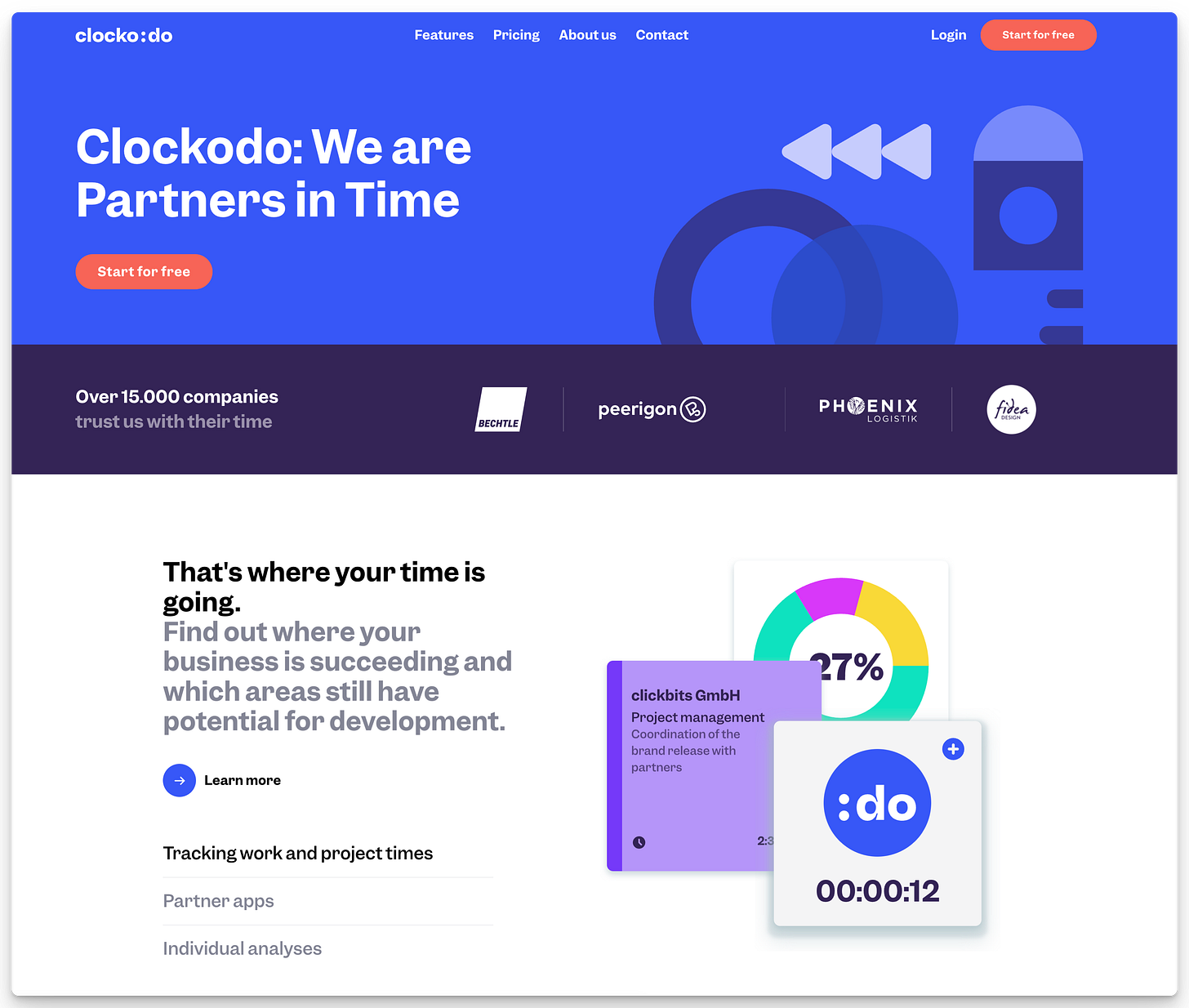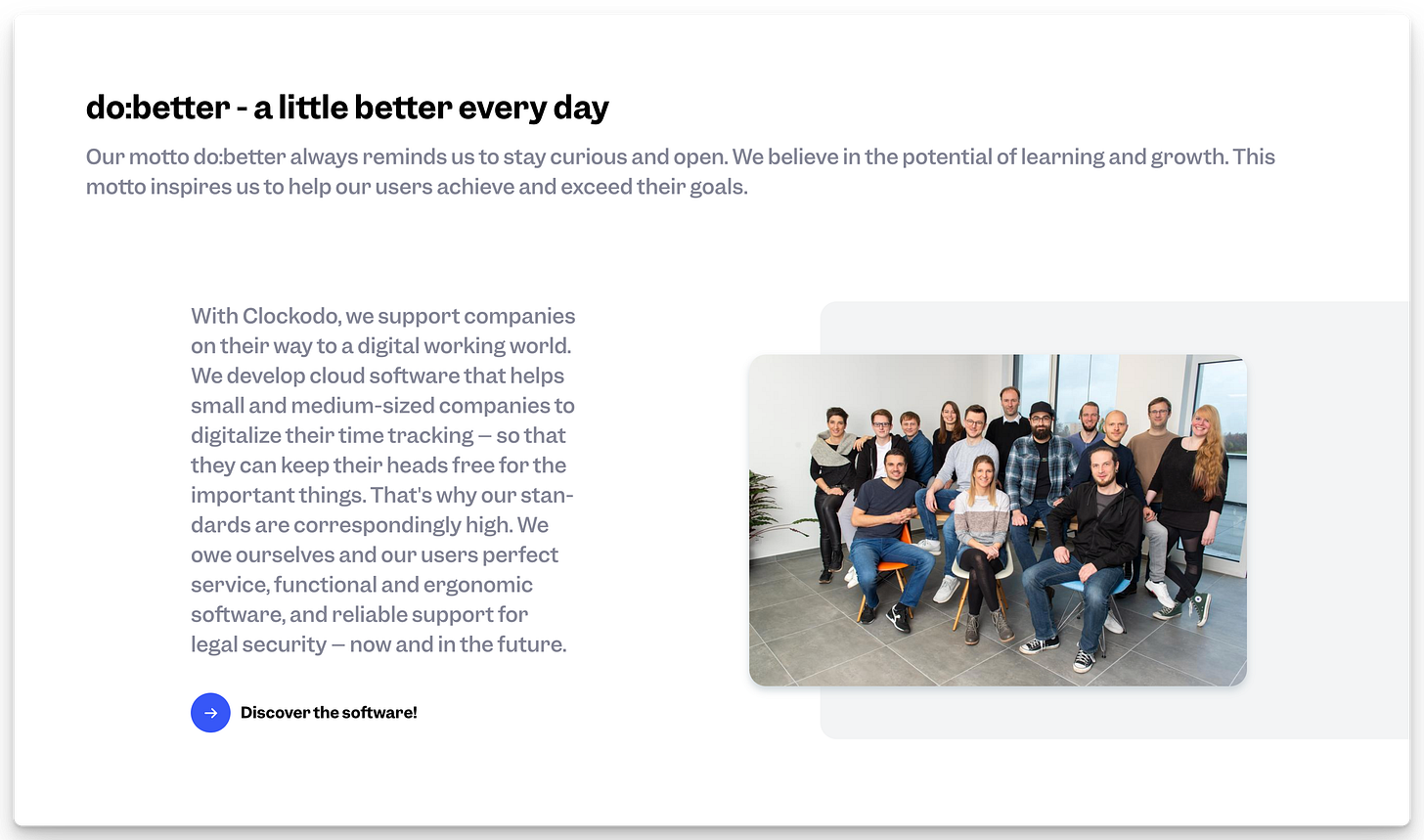13 Years of Clockodo: How Moritz Hofmann Reached Over 500,000 Euro MRR with 35 People
"Happy Bootstrapping" Volume #36
Moritz Hofmann is the founder of Clockodo – a project and time tracking solution for service providers. What began 13 years ago as a solution to their own problem is now a company with 35 employees at two locations, over 10,000 paying customers, and more than 500,000 euros in monthly recurring revenue. Completely bootstrapped, without a single euro of external funding. How did he achieve this? A story about perseverance, customer focus, and the realization that five to six years until positive cash flow can be completely normal.
This is a summary of Episode 148 of the “Happy Bootstrapping” Podcast (German).
From Party Portal to Time Tracking: The Founding Story
Moritz and his co-founder Thomas have known each other since school. Already in ninth grade, they were interested in computer science and programming. “It started back in ninth, tenth grade,” Moritz recalls. During their high school graduation years, they started with small jobs: websites for acquaintances, setting up PCs – classic pocket money business.
Then came chance: they founded a party portal with photos, forums, and community features. “Surprisingly, it became relatively big,” Moritz recounts. The portal financed their computer science studies – with banner advertising and their own parties. But by the late 2000s, Facebook arrived, and local party portals lost relevance.
The two focused on web development and built a small IT agency. This is exactly where the problem arose that led to Clockodo:
“When you send the customer an invoice for 8,000, 9,000 euros afterward without being able to itemize what you actually did, they throw it back in your face.”
They often didn’t even know themselves how much time they had spent on which customer.
The solution? Build it themselves. “We both could program and somewhat recklessly thought we could do it better,” Moritz admits. The first version took about a year – longer than planned, but the foundation for Clockodo was laid.
The Product and Business Model: From Freelancers to Enterprise
Clockodo tracks working and project hours, primarily for service providers. The difference from other tools: you don’t just know when you started and took breaks, but also exactly which tasks you completed – and can invoice them directly.
The business model is classic SaaS with a broad target audience: from freelancers who use Clockodo for free, to small companies with five to ten employees, to enterprise customers like Bechtle with several hundred users. Over 10,000 paying customers generate more than 500,000 euros MRR.
“Our guiding principle was always to only spend as much as we take in,” Moritz explains the bootstrapping philosophy. No overextension, no risk – only organic growth through their own efforts. Today, 35 employees work at two locations: Unna and Fürth.
Marketing: SEO, Google Ads, and the Power of Referrals
Clockodo’s marketing is based on three pillars: SEO, Google Ads, and referrals. “We paid attention to that from the very beginning,” Moritz says about search engine optimization. Even the first website was SEO-optimized – an advantage that has built up over 13 years.
Google Ads came later and is now an important channel. But the strongest driver? Referrals. “The product is what drives the most right now and also brings new customers,” Moritz admits. Those who use Clockodo and are satisfied recommend it. Simple but effective.
Social media works less well. “We’re always testing new channels, including social media, but we haven’t really achieved a breakthrough,” Moritz concedes. With a B2B tool for time tracking, customers might not expect social media posts anyway. The focus remains on what works: a good product that spreads by word of mouth.
Bootstrapping Challenges: Five Years to Break Even
The biggest challenge? Time.
“It took us several years, five, six years, to somehow get on solid ground or at least really have positive cash flow.”
Five to six years without significant revenue – financed by the parallel agency business.
“Whenever we had some breathing room with agency contracts, we continued working on Clockodo,” Moritz describes the early days. Sometimes no development for a month, then more again. A classic side-project start that requires patience.
The second challenge: the transition from founder team to real company. With 35 employees at two locations, Clockodo is no longer a two-person project. “Nowadays I’m actually completely away from the computer,” Moritz says about his current role. Less programming, more leading.
The third challenge: competition. Toggle already existed when Clockodo started. Today the market is full of time tracking tools. Clockodo differentiates through depth of detail and focus on service providers – and through 13 years of continuous development.
What I Learned from the Interview:
Perseverance is not a cliché: Five to six years until positive cash flow is real. Those who persist win.
Referrals beat social media: In B2B SaaS, a good product is the best marketing channel. Social media doesn’t work for every business.
Starting on the side works: Clockodo was built parallel to the agency business. That’s slower but safer.
Learnings for Bootstrappers:
Solve your own problem: Clockodo was created because Moritz and Thomas couldn’t find good time tracking themselves. Your own problems are often the best business ideas.
Start on the side: No risk, no pressure. The agency business financed Clockodo’s development for years.
SEO from the start: 13 years of SEO building is a massive competitive advantage. Starting early pays off.
Don’t give up too quickly: “The most important thing is to just stick with it and not give up too quickly.” Five years without profit is normal.
Focus on what works: Referrals and Google Ads bring customers. Social media doesn’t. So: more of the former, less of the latter.
Grow organically: “Only spend as much as we take in.” No VC, no risk, no dependency.
Happy Bootstrapping is a German podcast where I interview bootstrapped founders, indie hackers, and solopreneurs about their startup journeys.
Over the years, I’ve connected with many successful entrepreneurs who have built e-commerce shops, SaaS platforms, mobile apps, content businesses, or hybrid models.
Furthermore I am a bootstrapper myself and growing my DevOps-as-a-Sercice and Web Operations Company “We Manage”.




